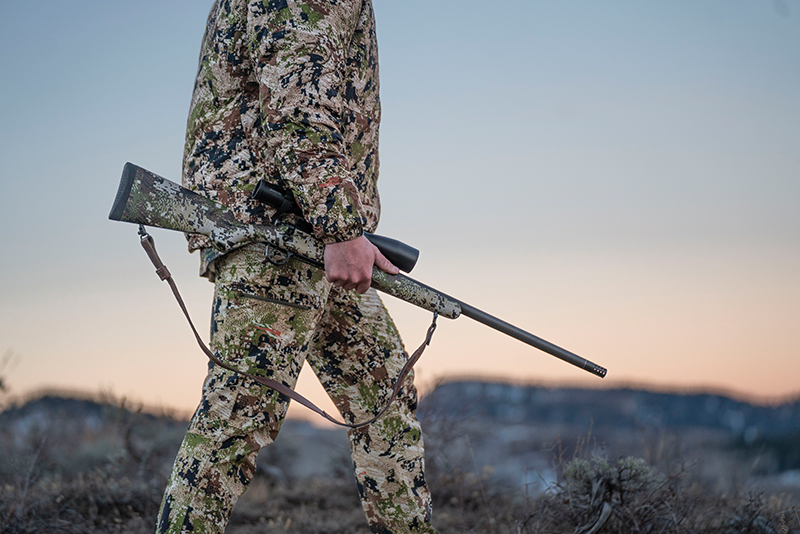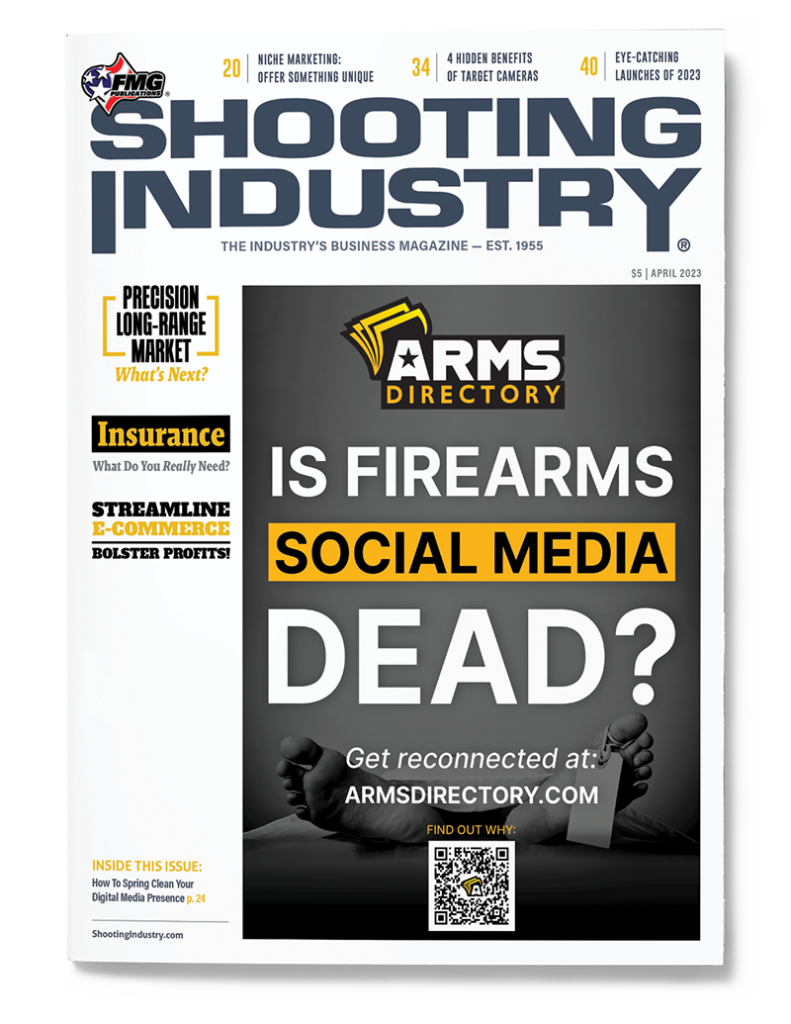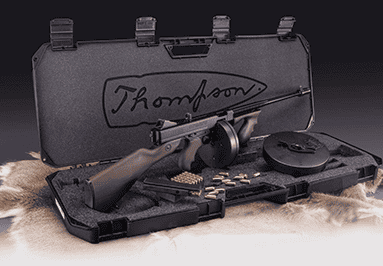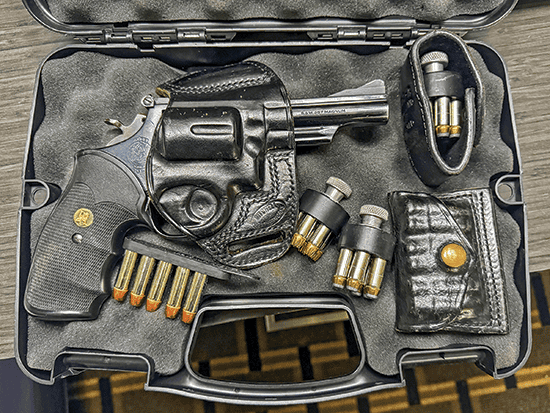What's Next For The Precision Long-Range Market?
Three years ago, when Allen Bennett bought his gun shop in St. Charles, Mo., he was on a mission of sorts. The former Marine wanted to give customers a better experience than the one he had when he decided to dip a toe into the world of precision rifles.
He recalls trips to numerous stores, where he received no shortage of opinions and information. The problem was most of it was conflicting information. One salesman would promote a cartridge, scope or rifle, which would then be trashed by a salesman at the next store. By the time it was over, he’d spent a lot of money on a setup that was less than ideal.
“It wasn’t like they did it with any kind of malice,” Bennett explained. “It was just they didn’t know. They just gave me the information they had, which was either outdated or they were just massively misinformed.”
So, when the opportunity came to buy his store — now called Full Circle Reloading and Firearms — he wanted to be different.
“I decided from day one, we were going to be an education-based company. I wanted to make sure the misinformation I got doesn’t happen here,” he said. “We’re trying to get the best information we can to bring it here for the customer.”
Bennett sees this expertise as a critical element for any store wanting to tap into the long-range precision rifle segment. Depending on where you do business, the product line could represent solid growth potential. Or it may be little more than a passing curiosity for customers who have difficulty finding a 100-yard range, let alone a 1,500-yard range.
Still, it’s a lot easier to talk about doing something than it is to actually do it. Bennett is overseeing a transformation, pushing his staff to embrace and understand the new products he’s been pulling into the store.
“It’s an active struggle to make sure the customers are getting the correct information on all fronts,” he shared. “And we’re trying to bring in new blood to make sure it’s exactly what’s happening.”
In a perfect world, a gun store’s staff would include specialists in a wide range of shooting disciplines. But that’s not likely in this post-pandemic job market, contends A.J. Hoffman, co-owner of SoDak Sports in Aberdeen and Mitchell, S.D.
It’s just not realistic to expect to find employees with extensive experience in long-range shooting.
“Unfortunately, I’m the only one here in this building who has ever shot 1,500 yards,” he said. “Today, it’s more about helping our people and training them.”
You also have to decide how important a particular segment is for your store. SoDak markets itself primarily as a hunting store, with an emphasis on things like deer, pheasant and waterfowl. The long-range market is a much smaller niche, making it difficult to focus too much staffing power in that direction.
Outfitting The Customer
Equipping the long-range shooter can be a different experience when compared with the average handgun, shotgun or rifle customer. Even an entry-level setup can run $2,000 and higher. And for those with the desire and the money to spend, the ceiling is considerably higher at $5,000 and beyond.
As with higher-end 1911s, shotguns and revolvers, deciding what to carry can be a challenge. You can sink a lot of money into inventory and still not have exactly what your customer is looking for. Hoffman sees customers falling into two distinct groups.
“There’s a handful of guys who walk in and buy the Cadillacs. Right away, they’ll spend all the money on high-end, custom-built rifles,” he maintained. “And there are guys who buy a moderate-priced chassis rifle right off the shelf, put a decent scope on it, buy some factory ammo and get running.”
His shop focuses on a small group of popular rifles, including Browning’s X-Bolt, SIG SAUER’s Cross-PRS and Bergara. At the higher end of the spectrum, they carry Christensen Arms and Fierce Firearms. Rifles are generally paired with optics by Vortex, Nightforce and Leupold.
For those customers who move further into customization, there’s not a lot SoDak can do, given the relative size of the segment for his store.
“If somebody goes custom, I always joke we’ll lose them as a rifle customer, because it’s kind of hard to go back to a factory rifle,” he said.
Bennett uses a somewhat different approach at Full Circle. For the lower end of the market, they carry the Ruger American and Savage Axis. Both rifles offer customers an option to walk out of the store with a decent setup (including optic) for less than $1,000.
Most of those customers, he believes, have a hard time understanding the value of spending several thousand dollars more for a better kit. Often, this realization comes later, after they start pushing the limits of what a factory can rifle can do at ranges of 1,000 yards or more in a variety of weather conditions.
“Once you start running a custom rifle, you understand it’s less about the accuracy. Modern rifles are unbelievably accurate,” he reasoned. “You realize it’s more about consistency over time. It’s about the big picture and it’s worth it.”
When his customers are ready to go full-custom, he can meet the demand through a partnership with Sterling Precision, a gunmaker in nearby Farmington, Mo. The store works directly with Sterling to make sure customers are able to get exactly what they want.
They also keep a couple of custom rifles — one set up for hunting, the other for competition — on display at the shop. This can help those customers get a better understanding of what they get for the extra money.
“With the regulars at the store, the more they come in and play with them, the more their brains get wrapped around the idea these things are really nice,” he said.
“Today, it’s more about helping our people and training them.”
A.J. Hoffman, Co-Owner
SoDak Sports • Aberdeen & Mitchell, S.D.
6.5 Creedmoor And What Else?
When talking about long-range shooting, it’s impossible to overstate the dominance of 6.5mm Creedmoor. The easy-handling, flat-shooting Creedmoor is the top-selling cartridge at both stores, often beating the combined sales of all other long-range cartridges.
Other calibers with potential include 6.5 PRC (particularly for hunters), 28 Nosler and Hornady’s recently introduced 7mm PRC. Hoffman likes what he’s heard so far about the 7mm PRC and has guns and ammo on order.
“It’s going to be interesting to see what happens,” he noted.
Still, 6.5 Creedmoor is going to be tough to dethrone when you consider both its performance and relatively light recoil, Bennett suggested.
“Anybody who says recoil doesn’t affect them either doesn’t shoot a lot, or they’re lying to you,” he quipped. “People respond to recoil. If you can get them on something softer, they’ll shoot better because they’re not flinching.”
The popularity of the cartridge also has the potential to impact sales in other ways. With ammo makers still struggling to catch up with demand, it’s more difficult to find ammo or reloading components for less-popular cartridges. Bennett shared it’s not uncommon to watch a customer come into the store and start assembling everything needed to reload for a particular gun, but as soon as they hit a roadblock (no primers, for example), they’ll just put everything back on the shelves and walk out.
“They won’t buy the guns and they won’t buy everything else they need,” Bennett informed. “It’s affecting sales. I mean, we’re definitely feeling the shortage.”
“People respond to recoil. If you can get them on something softer, they’ll shoot better because they’re not flinching.”
Allen Bennett, Owner
Full Circle Reloading • St. Charles, Mo.
What’s Next?
Both shop owners see the potential for this segment to grow, particularly in areas where long-range shooting opportunities are plentiful. They also see reasons to question whether this growth will occur in the short term.
Bennett, in particular, is optimistic about the impact of competitions and classes encouraging shooters to seek out ways to improve their skills and scores. The store offers precision-rifle classes geared toward newbies, through a partnership with a local range. His classes draw a wide range of students and gear.
“These guys have everything from your low-end factory rifles to full-blown custom rifles and we’re taking them out to 1,000 yards and teaching them the fundamentals,” said Bennett, noting many of his students later move on to competitions.
Still, it’s hard to look at the future of the sector without factoring in those ongoing supply issues. Primer, powder and bullet shortages are particularly hard on this group, with so many long-range shooters preferring to make their own ammo.
“You know, it’s hard to do a load work-up with a bullet when you only see it once every five months,” Bennett asserted.
There’s also the general impact of inflation, which is putting a dent in the leisure budgets of many customers.
“If you had asked me three years ago, I could have given a pretty definitive answer,” he stated. “But with COVID, and the shortages and the cost of living going through the roof, we’re seeing an overall decline across everything.”
The other major roadblock is the fact many customers don’t even have the option of taking part in this segment, according to Hoffman, likely echoing the thoughts of store owners in areas without easy access to long-range shooting facilities. For his customers, it’s a two- or three-hour drive to get to a 1,000-yard range.
“There are certain areas where guys can shoot that distance, and there are us guys who can’t,” he said. “So, I think it’s always going to always be a small market for us.”






